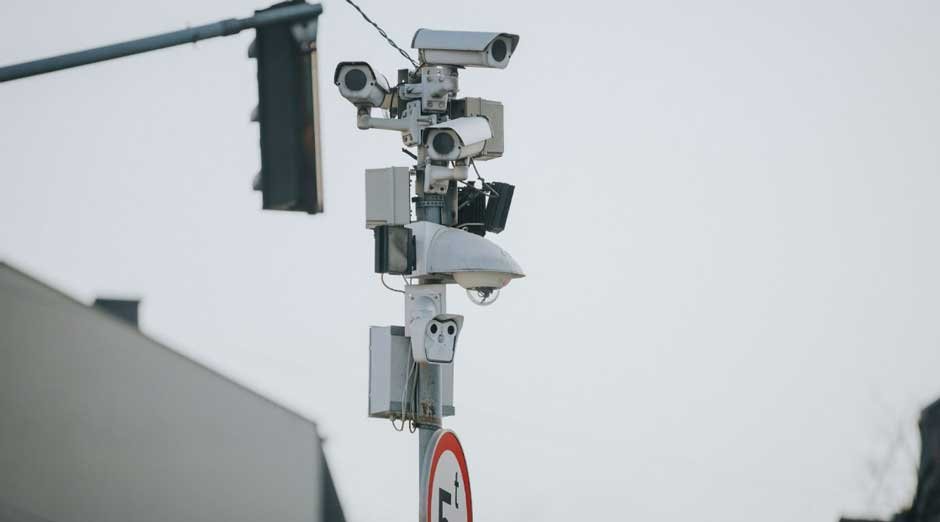Operating on both psychological and practical levels, the link between security cameras and crime reduction is well-established and complex. Modern security plans depend on closed-circuit television (CCTV) and IP camera systems, which also serve as an effective deterrent, a vital investigative tool, and a force multiplier for law enforcement.
A visible camera can profoundly change the risk-reward analysis for a possible criminal, therefore discouraging crime before it starts. Beyond prevention, these systems provide invaluable high-resolution evidence that is instrumental in identifying, apprehending, and prosecuting offenders, thus raising the general chance of repercussions.
This is especially important in sensitive, high-value locations such as construction sites, where the strategic use of construction site security cameras not only safeguards valuables from theft and vandalism but also checks safety compliance, therefore producing a documented and safe operating environment that actively deters illegal behaviour.
Psychological Deterrent Effect
Deterrence is the main means that cameras help to lower crime. The idea of direct monitoring builds on the dread of being discovered. Potential criminals like vandals or thieves are more likely to see a high risk of identification and arrest when they see a camera. This clear sign of surveillance can convince them to drop their schemes or go to a less protected place.
The camera acts as a quiet, constantly vigilant protector that makes criminal activity appear too dangerous to attempt, hence stopping events from happening in the first place. It gives the impression of more law enforcement presence.
Offering Specific Forensic Evidence
Should a crime take place, security cameras offer indisputable forensic proof. High-definition video can produce sharp shots of offenders, their techniques, their tools, and the automobiles implicated. For police inquiries, this proof is absolutely crucial as it enables swift and exact identification of suspects.
Video evidence is extremely convincing in court and can result in greater conviction rates since it usually offers a straightforward story of the incident that is difficult for the defence to refute. This goal record strengthens a case based on facts and reduces dependence on perhaps untrustworthy witness testimony.
Allowing Real-Time Incident Response
Modern IP-based security systems provide real-time monitoring features. Security officers or property owners may see live feeds remotely from tablets or desktops, therefore enabling quick response to suspicious activity. Seeing a break in development, they can immediately contact the cops, set an audible alarm, or employ two-way audio to send a spoken warning.
This immediate reaction can help to stop a crime before it is finished, limit harm or damage, and greatly raise the likelihood that the criminals are apprehended on the scene, therefore improving the general efficacy of the security plan.
Effectively Tracking Large and Distant Locations
Cameras offer a cheap way to watch over large or isolated locations difficult to patrol personally. One system can cover many entry points, open perimeters, and locations for priceless assets at once. For big sites like construction sites, car parks, or industrial areas, cameras guarantee thorough monitoring coverage and remove blind spots.
This continuous, broad-area monitoring guarantees that any unauthorised incursion is rapidly noticed regardless of the time of day or the weather circumstances, therefore giving a degree of supervision that would need a large and expensive human security crew to reproduce.
Recording Action and Producing an Audit Trail
Beyond capturing offenders, cameras are fantastic tools for overall activity logging. Crucially for settling several conflicts, they produce a verifiable audit trail of all activities on a property. This may involve confirming delivery times, keeping track of employee adherence to safety rules, or looking into little occurrences such as unintentional damage.
From employees to visitors, the understanding that every action is documented promotes overall responsibility and better behaviour from everyone on the grounds, hence helping to create a neater and safer environment generally.
Reducing Insurance Rates
Many insurance companies provide discounted rates for homes with professionally installed and monitored camera systems. This is so since the existence of cameras reduces straight the possibility of successful theft, vandalism, and false liability claims.
Investing in a certified security system helps companies and homeowners to show their insurance providers their proactive risk management. Over time, the savings on insurance expenses could help to balance the initial investment in the security system, therefore making it both a prudent financial move and a protective one.
Conclusion
In the many-levelled approach to crime reduction, security cameras are a really powerful instrument. Their strength comes from two abilities: actively preventing crimes by means of psychological sway and reactively supporting justice by means of clear evidence. Their value is obvious from avoiding opportunistic stealing to allowing quick police reaction and supporting ongoing security improvements.
Though not a self-contained answer, a well-designed camera system is a powerful security infrastructure that protects property, keeps people safe, and encourages a general sense of community safety when combined with other measures like enough lighting and access control, hence a necessary asset in modern crime prevention.




